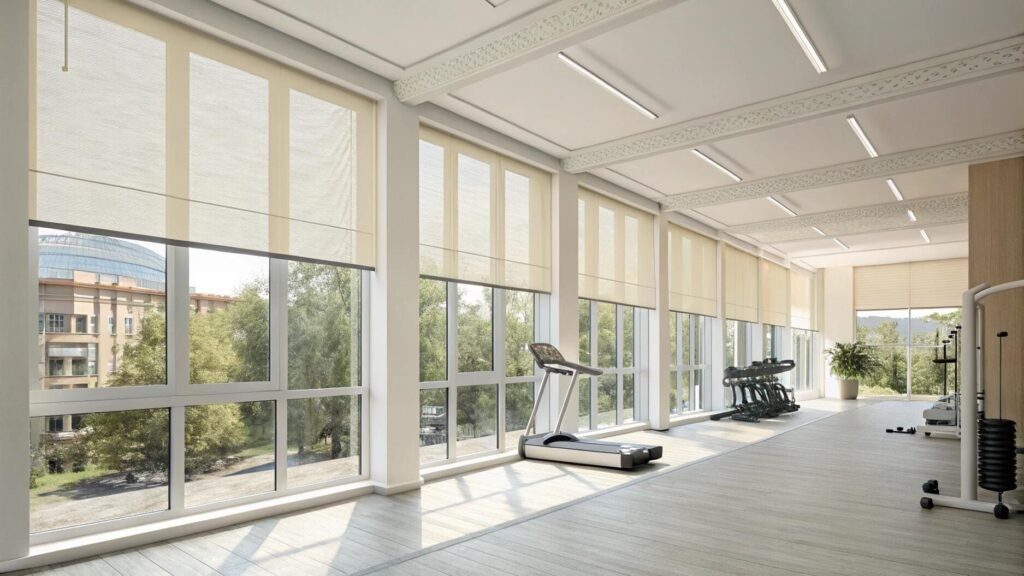After installing both light and dark blinds across hundreds of projects, I’ve learned that color choice affects more than aesthetics—it fundamentally changes how your space performs thermally.
Light-colored blinds reflect heat and reduce cooling costs by up to 33%, while dark blinds absorb more heat but provide superior glare control and privacy. The optimal choice depends on window orientation, climate conditions, and specific room requirements rather than personal preference alone.
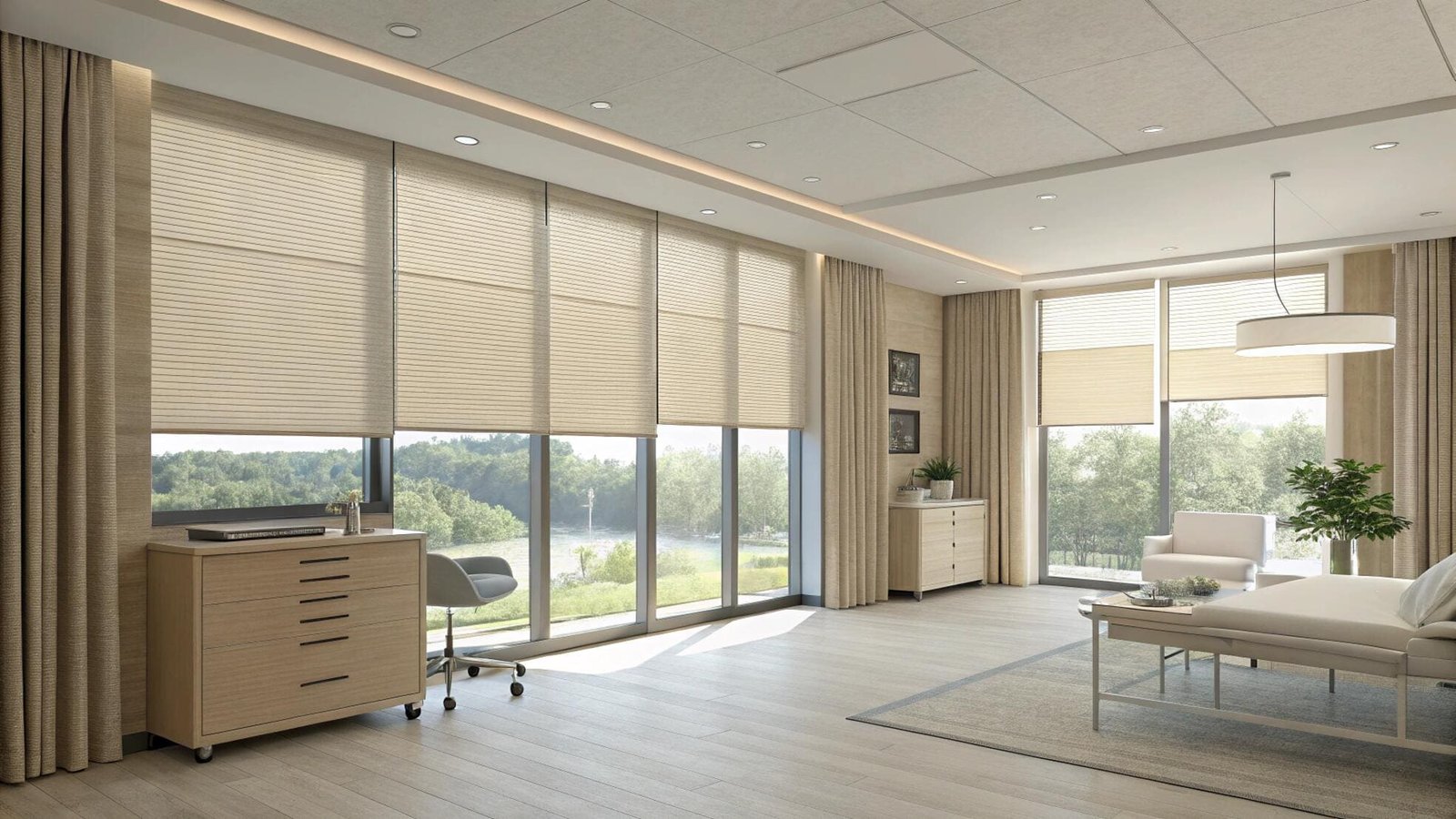
Understanding these thermal and visual differences helps you make informed decisions that optimize both comfort and energy efficiency. The science behind color performance reveals why professional buyers often specify different colors for different applications.
What color blinds block the most heat?
Light-colored blinds, particularly white and cream varieties, provide superior heat blocking performance[^1] through reflective properties that bounce solar radiation away from windows.
White and light-colored blinds reflect up to 80% of solar heat, making them the most effective choice for reducing heat gain. These colors work by bouncing sunlight away from the window surface rather than absorbing it, keeping interior spaces significantly cooler during hot weather.
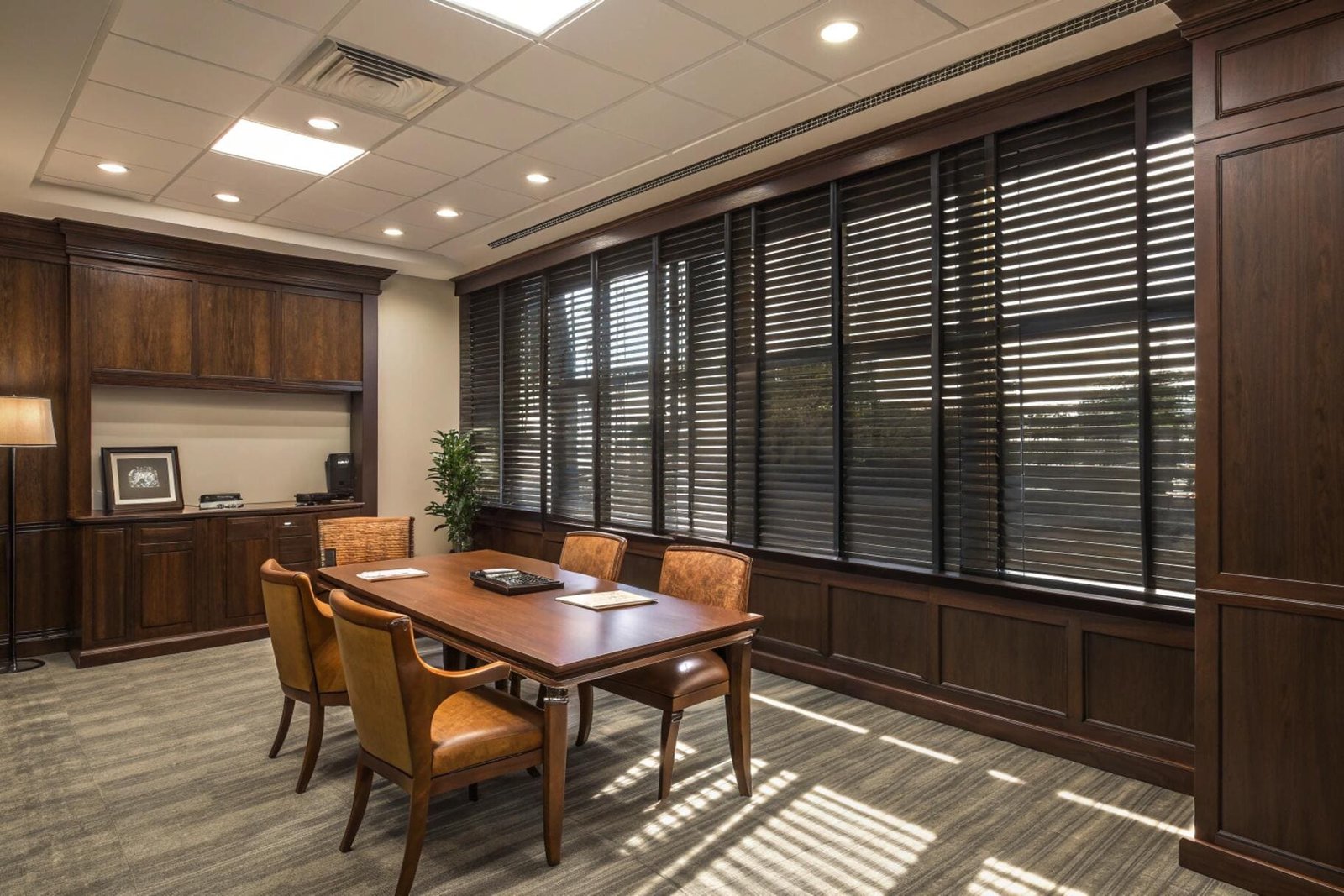
The physics of color and heat absorption[^2] explains why lighter colors outperform darker alternatives for thermal control. Light colors have high albedo ratings, meaning they reflect most incident solar radiation back toward its source. White surfaces can reflect 70-90% of solar energy, while dark surfaces may absorb 80-90% of the same energy.
Material composition enhances the heat-blocking capabilities of light-colored blinds beyond basic color properties. Solar-reflective fabrics with specialized backings can boost heat rejection rates significantly. Light-colored blinds with metallized or reflective backings can achieve heat rejection rates exceeding 95% .
Heat Blocking Performance by Color:
| Blind Color | Heat Reflection Rate | Heat Absorption Rate | Best Application |
|---|---|---|---|
| White | 80-90% | 10-20% | South/West-facing windows |
| Cream/Beige | 70-80% | 20-30% | General applications |
| Light Gray | 60-70% | 30-40% | Office environments |
| Medium Colors | 40-60% | 40-60% | Balanced aesthetics |
| Dark Colors | 20-40% | 60-80% | Privacy/glare control |
| Black | 10-20% | 80-90% | Specialized applications |
Window orientation significantly impacts the effectiveness of light-colored blinds for heat control. South and west-facing windows receive the most intense solar radiation and benefit most from reflective light-colored treatments. East-facing windows experience morning heat gain that light colors can effectively manage, while north-facing windows require less thermal consideration.
Climate considerations affect the relative value of heat-blocking blind colors. Hot, sunny climates with long cooling seasons favor light-colored blinds that reduce air conditioning loads. Moderate climates may benefit from seasonal color strategies, though most installations use year-round solutions rather than changing blinds seasonally.
Do dark blinds make a room hotter?
Dark blinds absorb significantly more solar energy than light alternatives, converting that energy to heat that can raise room temperatures and increase cooling costs.
Dark blinds absorb 60-90% of solar radiation, converting it to heat that radiates into the room. This heat absorption can raise room temperatures by 5-15°F compared to light-colored alternatives, making them problematic for spaces trying to maintain cool temperatures during hot weather.
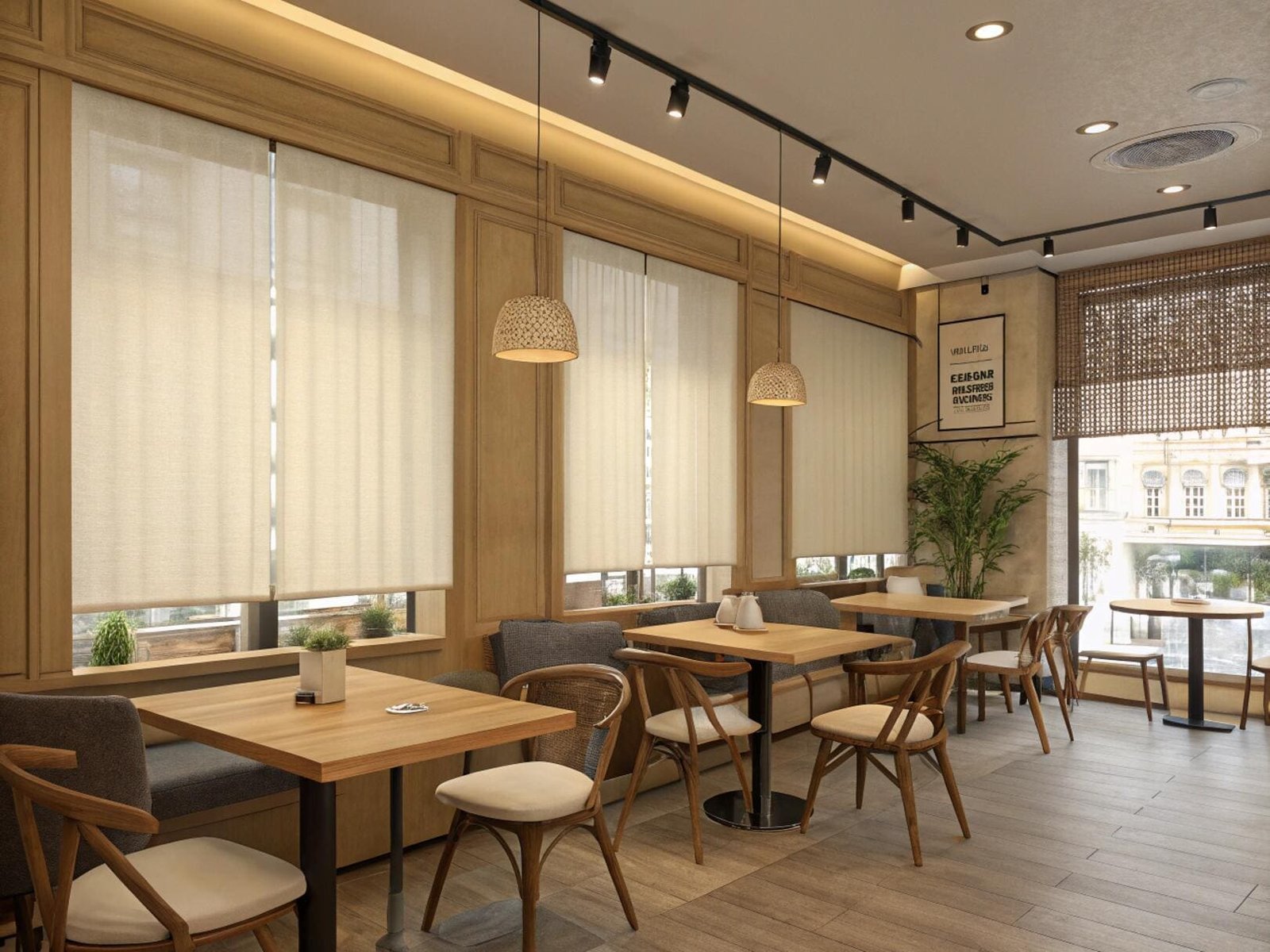
The thermal behavior of dark blinds[^3] stems from fundamental physics principles governing light absorption and heat transfer. Dark surfaces absorb broad spectrum solar radiation and convert it to thermal energy through molecular vibration. This absorbed energy must dissipate somehow, typically through radiation and convection into the surrounding air space.
Heat transfer mechanisms explain how absorbed solar energy affects room temperatures. Dark blinds become heat sources that radiate thermal energy inward, raise air temperatures through convection, and create thermal stratification that affects comfort. The magnitude of this effect depends on blind material, installation method, and ventilation characteristics.
Dark Blind Heat Impact Analysis:
| Factor | Impact Level | Temperature Increase | Energy Cost Impact |
|---|---|---|---|
| Black Blinds | High | 10-15°F | 20-30% higher cooling |
| Dark Brown/Navy | Medium-High | 7-12°F | 15-25% higher cooling |
| Medium Dark | Medium | 4-8°F | 10-15% higher cooling |
| With Reflective Backing | Reduced | 2-5°F | 5-10% higher cooling |
Seasonal considerations affect the impact of dark blind heat absorption differently throughout the year. Summer conditions amplify the negative effects of heat absorption, making dark blinds counterproductive for cooling efficiency. Winter conditions may benefit from solar heat gain, though this advantage rarely justifies the summer penalty in most climates.
Mitigation strategies can reduce the thermal penalties of dark blinds while preserving their aesthetic and functional benefits. Reflective backings, thermal barriers[^4], and improved ventilation can minimize heat transfer. However, these solutions add cost and complexity that may not justify choosing dark colors for purely thermal applications.
Do light filtering shades block sun glare?
Light filtering shades reduce glare effectively while maintaining visibility and natural light, making them excellent choices for spaces requiring comfortable viewing conditions without complete darkness.
Light filtering shades can reduce glare by 50-85% depending on fabric density and color, while still allowing natural light transmission for daytime activities. These shades diffuse harsh direct sunlight into softer, more comfortable illumination that reduces eye strain and screen glare.
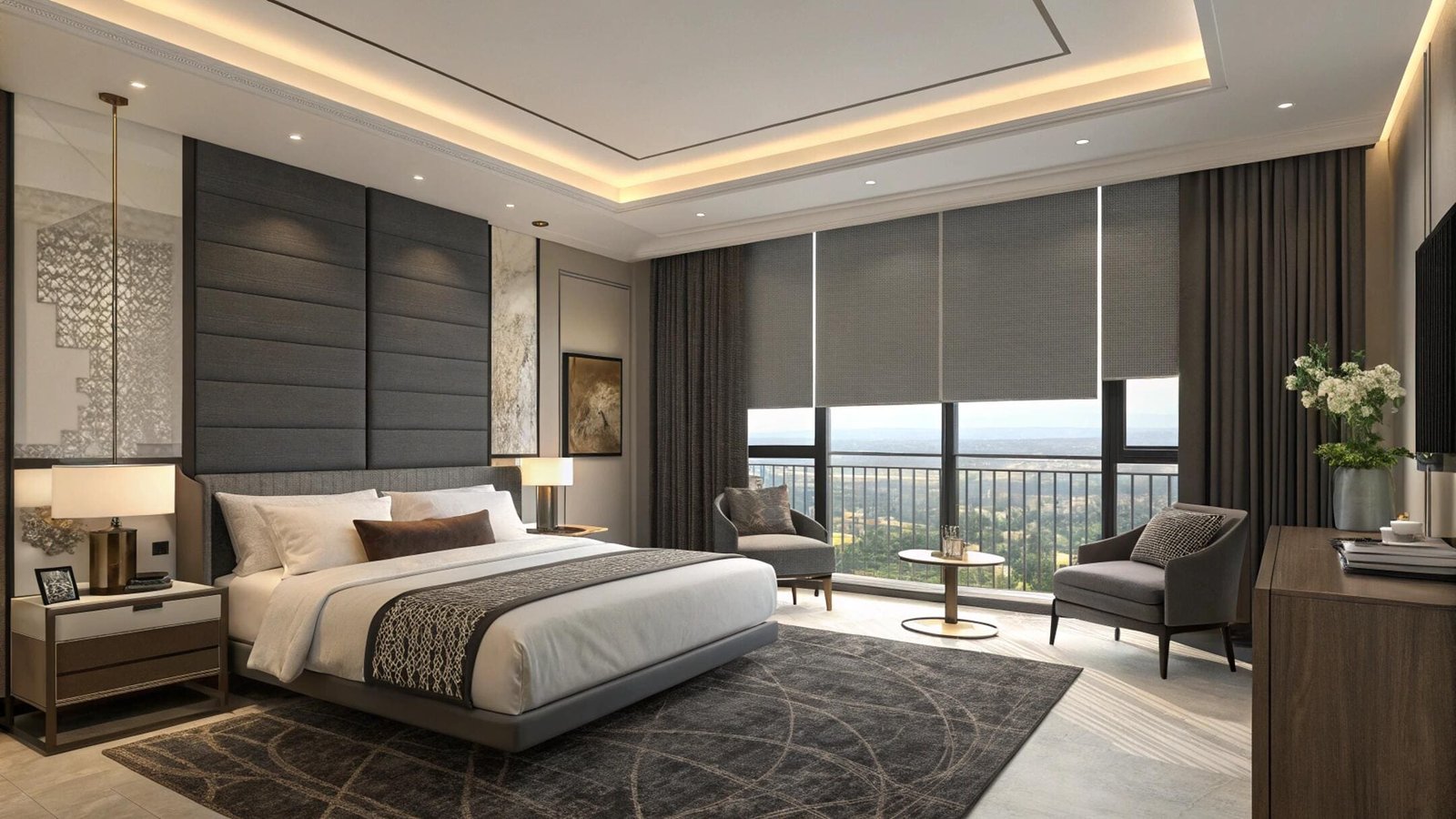
Glare control mechanisms in light filtering shades work through fabric structure and material properties that scatter and diffuse incoming light. The weave density, yarn thickness, and fabric treatment all contribute to glare reduction effectiveness. Tighter weaves provide more glare control but reduce light transmission, creating a balance between visibility and comfort .
Screen fabric technologies optimize glare control while preserving outward visibility. Solar screen fabrics with openness factors between 1-10% provide graduated glare control options. Lower openness percentages offer more glare reduction but less visibility, while higher percentages maintain views with moderate glare control.
Light Filtering Performance by Openness Factor:
| Openness Percentage | Glare Reduction | View Clarity | Light Transmission | Best Use |
|---|---|---|---|---|
| 1-2% | 90-95% | Limited | 5-10% | High glare environments |
| 3-5% | 80-90% | Good | 15-25% | General office use |
| 7-10% | 70-80% | Excellent | 30-40% | Residential applications |
| 12-14% | 60-70% | Maximum | 45-55% | Minimal glare control |
Application considerations determine the optimal glare control level for different environments. Computer workstations benefit from higher glare reduction to minimize screen reflections and eye strain. Living areas may prefer moderate glare control that maintains natural lighting while reducing harsh contrasts. Television viewing areas require careful balance between glare control and room brightness.
Fabric color affects glare control performance through absorption and reflection characteristics. Darker screen fabrics provide better glare control and clearer outward views, while lighter fabrics reflect more heat but may create more visible texture patterns. The choice depends on prioritizing glare control versus heat rejection performance .
Are light or dark sun shades better?
Light-colored sun shades excel at heat rejection and energy efficiency, while dark shades provide superior glare control and visual clarity, making the optimal choice dependent on specific performance priorities.
Light sun shades are better for heat control and energy savings, blocking up to 90% more heat than dark alternatives. Dark sun shades are better for glare control and maintaining clear outward views, especially important for media rooms and computer workstations where visual comfort matters most.
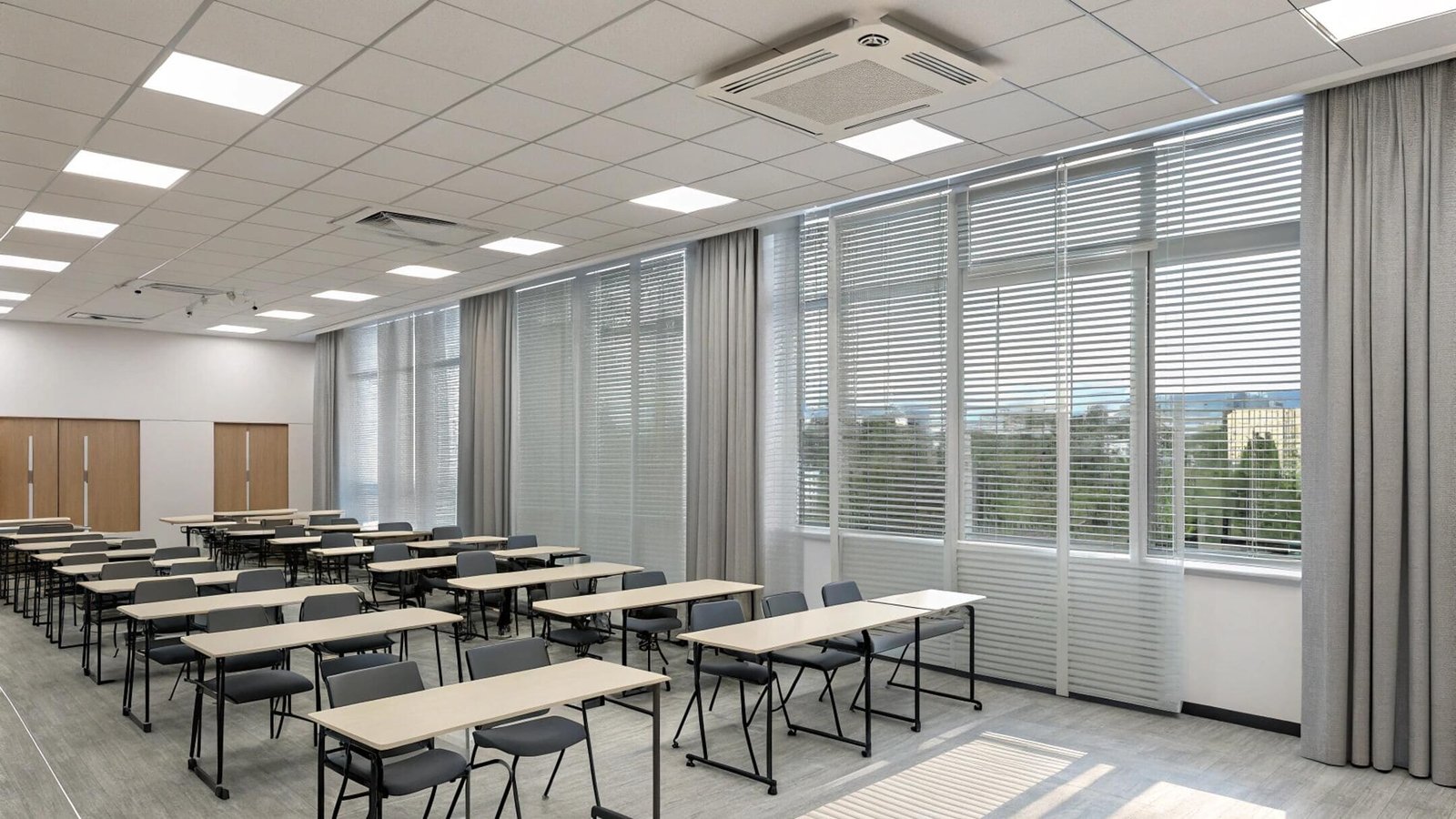
Performance trade-offs between light and dark sun shades require careful consideration of primary objectives and environmental conditions. Light shades prioritize thermal performance and energy efficiency, while dark shades emphasize visual comfort and aesthetic considerations. Most applications must balance these competing priorities.
Climate considerations significantly influence the relative value of light versus dark sun shades. Hot climates with high cooling loads favor light-colored shades that reduce air conditioning requirements. Moderate climates may benefit from dark shades that provide year-round glare control without excessive thermal penalties.
Comparative Performance Analysis:
| Performance Factor | Light Shades | Dark Shades | Advantage |
|---|---|---|---|
| Heat Rejection | 80-95% | 20-40% | Light shades |
| Glare Control | 60-80% | 85-95% | Dark shades |
| View Clarity | Good | Excellent | Dark shades |
| Energy Efficiency | High | Low-Medium | Light shades |
| UV Protection | 90-99% | 90-99% | Equal |
| Privacy (Day) | Good | Good | Equal |
Application-specific considerations help determine the optimal choice between light and dark sun shades. South-facing windows with intense solar exposure benefit most from light-colored heat-rejecting shades. Computer workstations and media rooms may justify dark shades despite thermal penalties for their superior glare control and visual performance .
Cost-benefit analysis should include both initial purchase price and ongoing energy costs when comparing light versus dark sun shades. Light shades may cost more initially but provide energy savings that offset the premium over time. Dark shades may require higher cooling costs but provide intangible benefits like improved comfort and productivity.
What color blocks the sun the best?
White and light metallic colors provide the highest solar blocking performance through reflective properties, while dark colors paradoxically absorb more solar energy despite appearing to "block" more light visually.
White blinds with metallic or reflective backing block the most solar heat, reflecting up to 95% of solar radiation away from windows. While dark colors block more visible light, they absorb significantly more heat energy, making light colors more effective for actual sun blocking and thermal control.
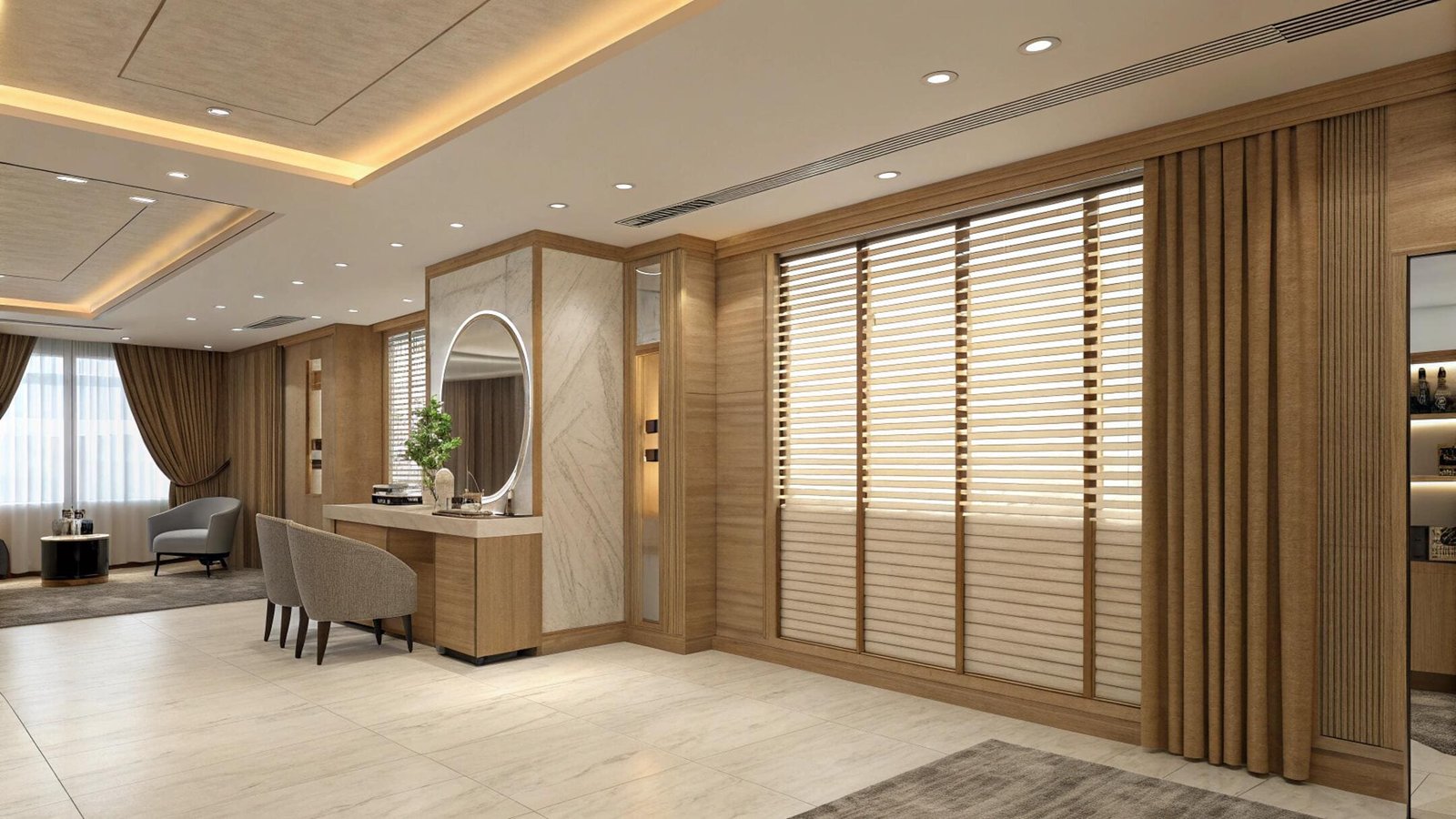
The distinction between light blocking and heat blocking creates confusion about optimal color selection for solar control. Visible light represents only a small portion of solar energy, while infrared radiation carries most of the thermal load. Colors that effectively block heat may transmit light, while colors that block light may absorb heat.
Reflective coating technologies enhance the solar blocking capabilities of light-colored blinds[^5] beyond basic color properties. Metallized fabrics, ceramic coatings, and specialized polymer treatments can boost reflectance rates to 95% or higher. These advanced materials maintain the heat-rejecting benefits of light colors while improving durability and performance consistency.
Solar Energy Blocking by Color and Technology:
| Color/Technology | Visible Light Block | Heat Block | UV Block | Overall Solar Block |
|---|---|---|---|---|
| White + Metallic | 40-60% | 90-95% | 99% | 85-90% |
| White Standard | 30-50% | 80-90% | 95% | 75-85% |
| Light Gray + Metallic | 50-70% | 85-90% | 99% | 80-85% |
| Medium Colors | 60-80% | 50-70% | 95% | 65-75% |
| Dark Colors | 80-95% | 30-50% | 95% | 55-70% |
| Black Standard | 90-99% | 20-40% | 95% | 50-60% |
Spectral considerations reveal why light colors outperform dark alternatives for comprehensive solar blocking. Solar radiation includes ultraviolet, visible, and infrared wavelengths with different energy characteristics. Effective solar blocking requires managing all three spectral regions, not just visible light that creates the perception of brightness or darkness .
Installation factors affect the real-world solar blocking performance of different colored blinds. Tight installation, proper sealing, and appropriate mounting methods maximize the effectiveness of reflective light-colored blinds. Poor installation can compromise even the best materials, while excellent installation can optimize performance from moderate materials.
What color repels heat the best?
White and highly reflective light colors repel heat most effectively by reflecting infrared radiation away from surfaces rather than absorbing it and converting it to thermal energy.
White repels heat best, reflecting 80-90% of infrared radiation that carries thermal energy. Light colors like cream, beige, and silver also provide excellent heat repulsion, while dark colors absorb 60-90% of heat energy and convert it to temperature increases inside the space.
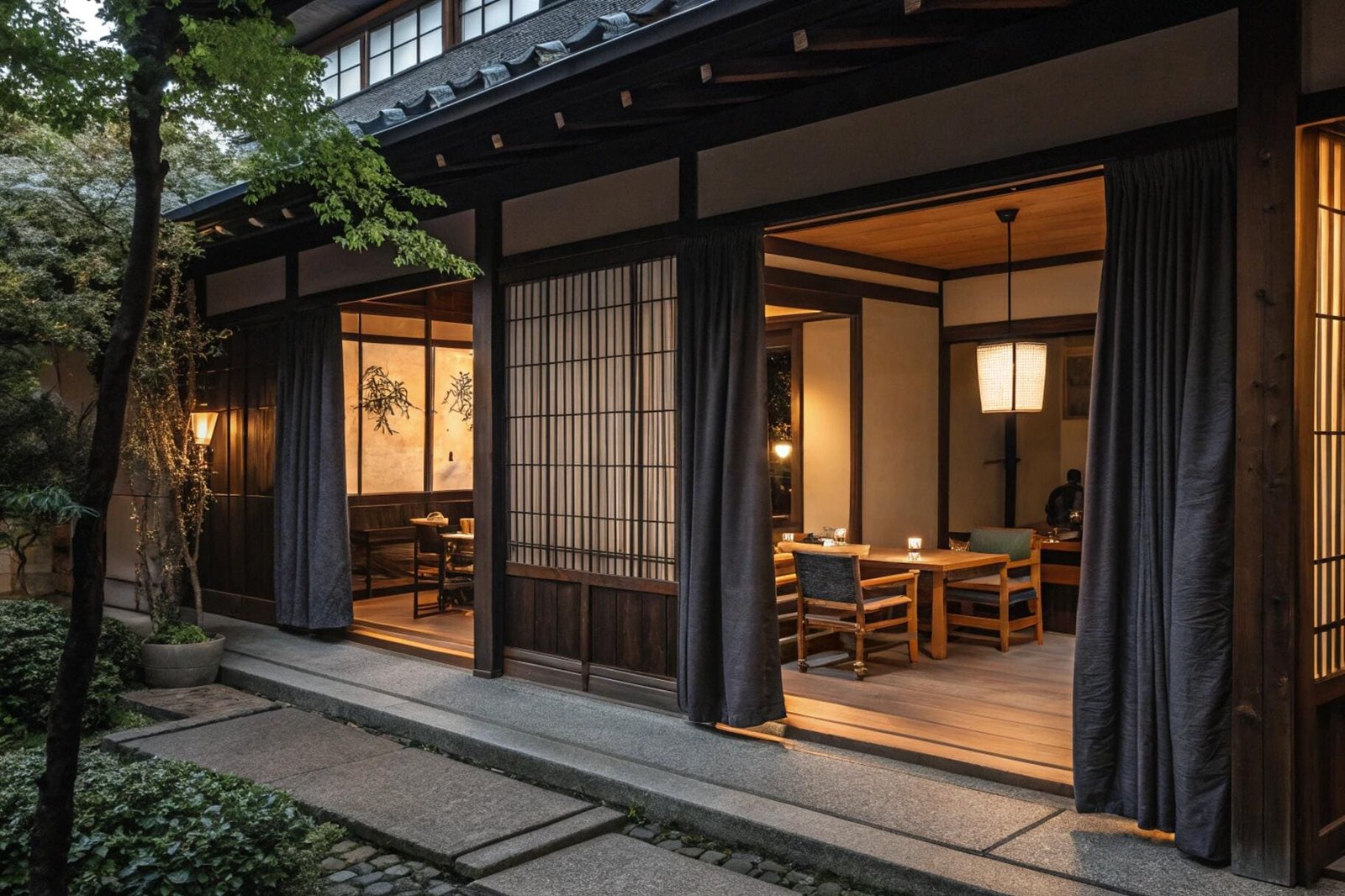
The physics of heat repulsion involves electromagnetic radiation interaction with surface materials at the molecular level. Light-colored surfaces have molecular structures that reflect rather than absorb infrared wavelengths, preventing thermal energy conversion. This reflection maintains surface temperatures closer to ambient conditions.
Advanced heat-repelling technologies enhance the natural properties of light colors through specialized coatings and treatments. Low-emissivity coatings, infrared-reflective particles, and phase-change materials can boost heat repulsion rates beyond what standard light colors achieve. These technologies are particularly valuable in extreme climate applications .
Heat Repulsion Performance Rankings:
| Color/Material | Heat Repulsion Rate | Surface Temperature | Cooling Load Impact |
|---|---|---|---|
| White + IR Coating | 90-95% | Ambient +2-5°F | Minimal increase |
| Standard White | 80-90% | Ambient +5-10°F | Low increase |
| Light Silver | 85-90% | Ambient +3-8°F | Low increase |
| Cream/Beige | 70-80% | Ambient +8-15°F | Moderate increase |
| Light Gray | 60-75% | Ambient +10-20°F | Moderate increase |
| Dark Colors | 20-40% | Ambient +20-40°F | High increase |
Climate zone considerations affect the relative importance of heat repulsion in blind color selection. Hot, sunny climates with long cooling seasons benefit most from maximum heat repulsion through light-colored blinds. Moderate climates may balance heat repulsion against other factors like glare control and aesthetics.
Energy efficiency implications of heat-repelling blind colors extend beyond immediate comfort to long-term operational costs. Light-colored blinds that effectively repel heat can reduce cooling loads by 15-30%, translating to significant energy savings over the blind’s service life. These savings often justify premium pricing for advanced heat-repelling materials and technologies.
What is the best color for commercial window blinds?
Light neutral colors like white, cream, and light gray provide the best balance of thermal performance, aesthetic versatility, and maintenance practicality for most commercial applications.
White and light gray blinds are optimal for commercial spaces, providing superior heat rejection, professional appearance, and energy efficiency. These colors reduce cooling costs by 20-30% while maintaining appropriate aesthetics for diverse business environments and client-facing spaces.
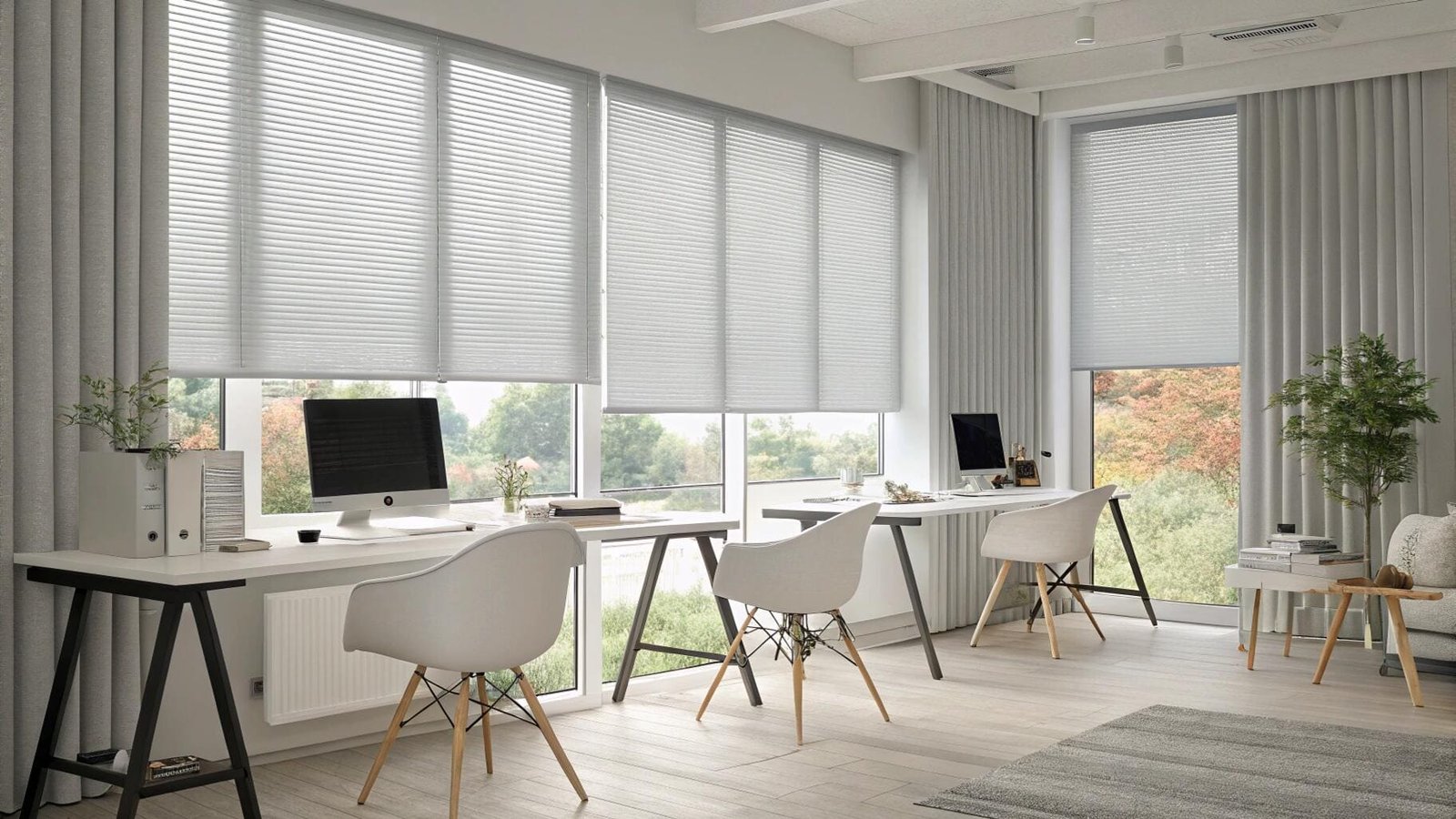
Commercial color selection requires balancing multiple performance criteria including thermal efficiency, visual appeal, maintenance requirements, and brand consistency. Light colors excel in most categories while providing flexibility for various interior design schemes. Professional environments particularly benefit from the clean, sophisticated appearance of light-colored window treatments.
Energy efficiency considerations make light colors especially attractive for commercial applications where utility costs directly impact profitability. Commercial buildings with extensive window areas face significant cooling loads that light-colored blinds can reduce substantially. The energy savings from proper color selection often justify higher initial costs for premium light-colored window treatments.
Commercial Color Selection Matrix:
| Color Choice | Thermal Performance | Aesthetic Appeal | Maintenance | Energy Savings |
|---|---|---|---|---|
| White | Excellent | Professional | Easy | 25-30% |
| Light Gray | Very Good | Modern | Easy | 20-25% |
| Cream/Beige | Good | Warm Professional | Moderate | 15-20% |
| Medium Gray | Fair | Sophisticated | Moderate | 10-15% |
| Dark Colors | Poor | Dramatic | Difficult | 0-5% |
Brand consistency requirements in corporate environments often influence color selection beyond pure performance considerations. Companies with established color schemes may specify blinds that complement their brand identity while accepting some thermal performance trade-offs. However, most successful commercial installations find ways to incorporate brand colors through accent elements while using thermally efficient light colors for primary window coverage.
Maintenance considerations favor light colors in commercial environments where appearance matters for client impressions and employee satisfaction. Light-colored blinds show dust and soil less readily than dark alternatives, maintaining professional appearance longer between cleaning cycles. This maintenance advantage reduces ongoing costs and helps justify the selection of light colors for commercial applications.
How do blind colors affect energy efficiency in commercial buildings?
Blind color selection can impact commercial building energy efficiency by 15-30% through thermal performance differences that directly affect heating and cooling loads throughout the year.
Light-colored blinds improve energy efficiency by reflecting solar heat and reducing cooling loads, while dark colors absorb heat and increase air conditioning requirements. Commercial buildings can achieve 20-30% cooling energy savings by specifying white or light-colored blinds instead of dark alternatives on sun-facing windows.
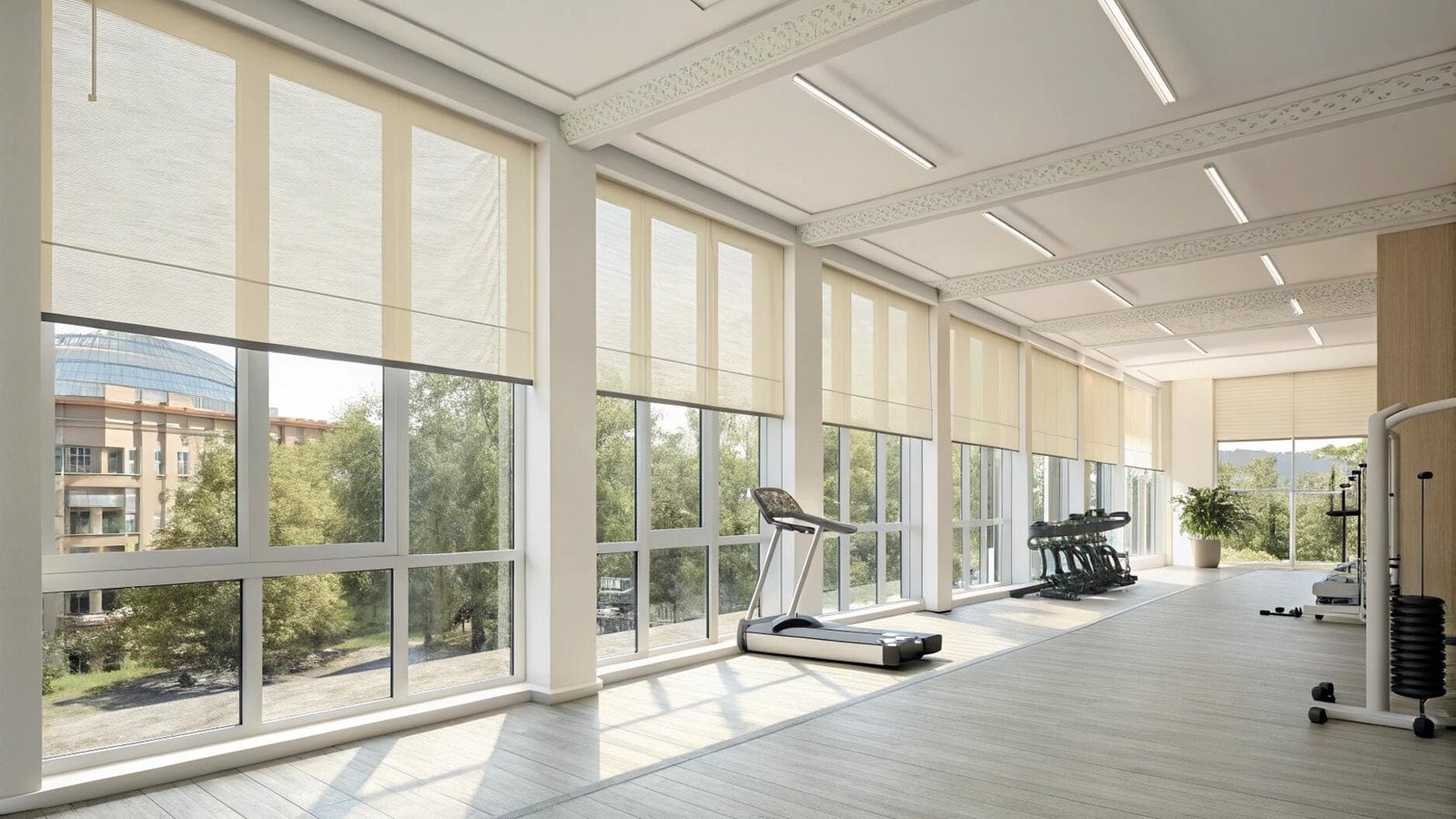
Solar heat gain represents the primary mechanism through which blind colors affect building energy performance. Windows with light-colored blinds experience significantly less heat gain than those with dark treatments, directly reducing the cooling load on HVAC systems during hot weather. This effect is most pronounced on south and west-facing exposures that receive intense solar radiation.
Building orientation and window exposure determine the energy impact of blind color choices across different areas of commercial facilities. South-facing windows benefit most from light-colored heat-rejecting blinds, while north-facing areas may prioritize other factors since thermal loads are naturally lower. East and west exposures experience moderate benefits from light-colored blinds, particularly during morning and evening peak solar angles.
Energy Impact by Building Orientation:
| Window Orientation | Light Blind Energy Savings | Dark Blind Energy Penalty | Optimal Color Strategy |
|---|---|---|---|
| South-facing | 25-35% cooling reduction | 15-25% cooling increase | White/light gray mandatory |
| West-facing | 20-30% cooling reduction | 12-20% cooling increase | Light colors strongly preferred |
| East-facing | 15-25% cooling reduction | 8-15% cooling increase | Light colors recommended |
| North-facing | 5-10% cooling reduction | 3-8% cooling increase | Color flexibility |
Seasonal energy patterns show varying impacts of blind color throughout the year. Summer conditions amplify the energy differences between light and dark blinds, while winter heating seasons may actually benefit from solar heat gain through darker window treatments. However, most commercial buildings operate in cooling mode for more hours annually than heating mode, making light colors optimal for year-round energy efficiency.
HVAC system sizing and efficiency considerations extend the energy impact of blind colors beyond immediate operational costs. Buildings with light-colored blinds may require smaller, less expensive cooling equipment due to reduced peak loads. This equipment sizing benefit provides additional value beyond operational energy savings and should be considered during new construction or major renovation planning.
Conclusion
Light-colored blinds provide superior heat rejection and energy efficiency, while dark colors offer better glare control, making optimal selection dependent on specific performance priorities.
Optimize Your Space with Smart Color Selection
Don’t let poor blind color choices sabotage your energy efficiency and comfort goals. Our expert team understands how color impacts thermal performance, glare control, and long-term operational costs in different applications.
We provide detailed performance analysis and color recommendations based on your specific building orientation, climate conditions, and functional requirements. Our technical expertise ensures you get optimal performance from your window treatment investment.
Get your personalized blind color analysis and energy efficiency consultation: **info@velablinds.com
Extended FAQ Section
Do light-colored blinds get dirty faster than dark ones?
Light-colored blinds actually show dirt and dust less readily than dark alternatives, contrary to common perception. Dust particles typically appear lighter in color and blend with light blind surfaces, while they create stark contrast against dark backgrounds that makes soiling more visible.
The maintenance advantage of light colors extends beyond visual appearance to practical cleaning considerations. Light-colored blinds maintain professional appearance longer between cleaning cycles, reducing maintenance frequency and costs in commercial environments. Dust accumulation affects all blind colors equally, but light colors mask the appearance better until scheduled cleaning occurs.
Fabric selection and surface treatments matter more than color for soil resistance and cleaning ease. High-quality light-colored blinds with stain-resistant treatments and smooth surface finishes actually prove easier to maintain than lower-quality dark alternatives. The key is selecting appropriate materials and finishes rather than relying solely on color to hide soiling. Professional-grade light-colored blinds typically provide better long-term appearance retention through superior materials and manufacturing quality.
Can you use different blind colors on different windows in the same building?
Different blind colors can be strategically used throughout commercial buildings to optimize performance for each exposure and application, though aesthetic coordination requires careful planning to maintain professional appearance and design cohesion.
Performance-based color selection often justifies using light colors on south and west exposures for maximum heat rejection while accepting darker colors on north-facing windows where thermal performance matters less. This approach optimizes energy efficiency while providing design flexibility for spaces with specific functional requirements like conference rooms or executive areas.
Coordination strategies help maintain visual harmony when using multiple blind colors throughout facilities. Consistent hardware finishes, similar opacity levels, and coordinated color families prevent the appearance of random selection while enabling performance optimization. Many successful commercial installations use two or three coordinated colors maximum to balance performance and aesthetics. The key is developing a systematic color strategy rather than making arbitrary room-by-room decisions that may compromise both performance and appearance.
How do motorized blinds affect color selection for energy efficiency?
Motorized blinds enhance the energy efficiency benefits of optimal color selection through programmable operation that maximizes thermal performance throughout daily and seasonal cycles. Automated systems can adjust blind position and angle to optimize heat rejection during peak solar conditions while maintaining appropriate lighting levels.
Smart control systems can compensate partially for suboptimal color choices through sophisticated positioning strategies, but they cannot overcome the fundamental thermal properties of dark versus light materials. Motorized systems work best when combined with thermally appropriate color selection to achieve maximum energy efficiency benefits.
The investment in motorization systems makes optimal color selection even more important from a total cost perspective. Since motorized blinds cost 2-3 times more than manual alternatives, maximizing their energy efficiency through proper color choice helps justify the premium investment. Light-colored motorized blinds provide the best combination of automated convenience and thermal performance for most commercial applications requiring both functionality and energy efficiency.
---
[^1]: Discover the science behind how different colors of blinds impact heat blocking and energy efficiency.
[^2]: Explore the differences in heat absorption between light and dark blinds and their impact on room temperature.
[^3]: Learn about the benefits of dark blinds, including glare control and privacy, for your living spaces.
[^4]: Find out how thermal barriers can enhance the performance of blinds in controlling heat.
[^5]: Explore how light-colored blinds can significantly reduce cooling costs and improve energy efficiency.Partner with VelaBlinds for Your Next Project
Smart window treatments shouldn’t be complicated. After working with 500+ distributors and contractors worldwide, I’ve streamlined the process to get you quality products, competitive pricing, and reliable support – every time.
Why project professionals choose VelaBlinds:
- ✅ Fast, Accurate Quotes – Detailed specs and pricing within 24 hours
- ✅ Transparent Pricing – No hidden fees, volume discounts clearly outlined
- ✅ Quality Assurance – Direct partnerships with certified OEM manufacturers
- ✅ Project Support – Dedicated account manager from quote to delivery
Start your next project:
📧 Quick Quote: Send your requirements to info@velablinds.com
📱 Direct Contact: WhatsApp +86 137 2012 8317
🌐 Browse Solutions: https://velablinds.com/
📁 Product Resources: Access spec sheets, catalogs & project files
Jimmy Chen, Founder
"I built VelaBlinds to solve the real challenges I faced as a project buyer – long lead times, unclear specs, and unreliable suppliers. Let’s discuss how we can power your projects with smarter blinds."
Serving distributors and contractors across North America, Europe, and Australia since 2018.

